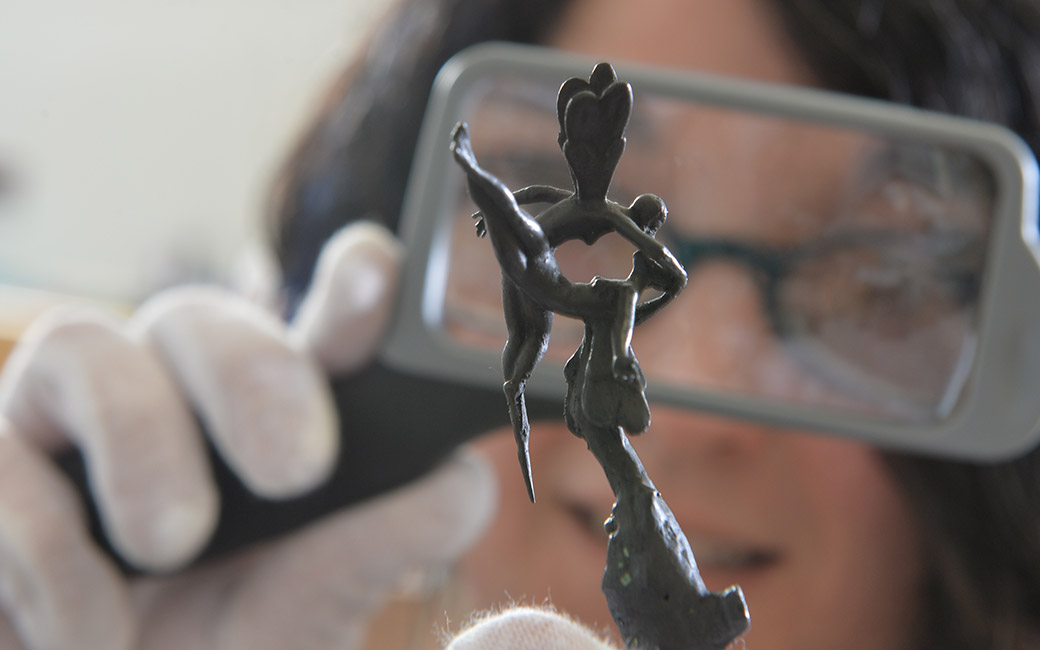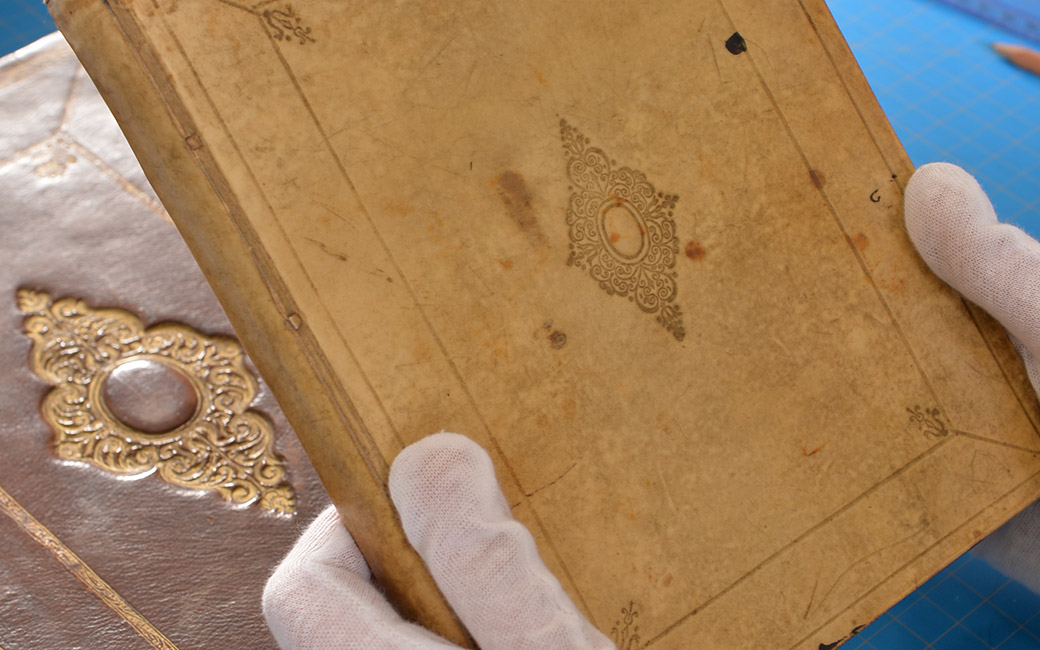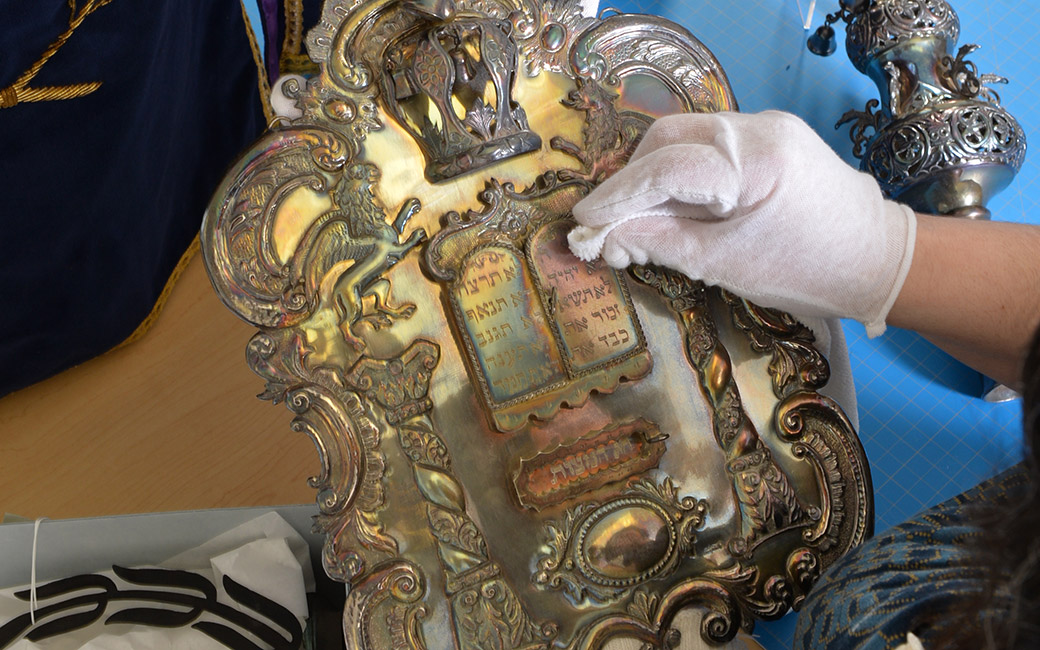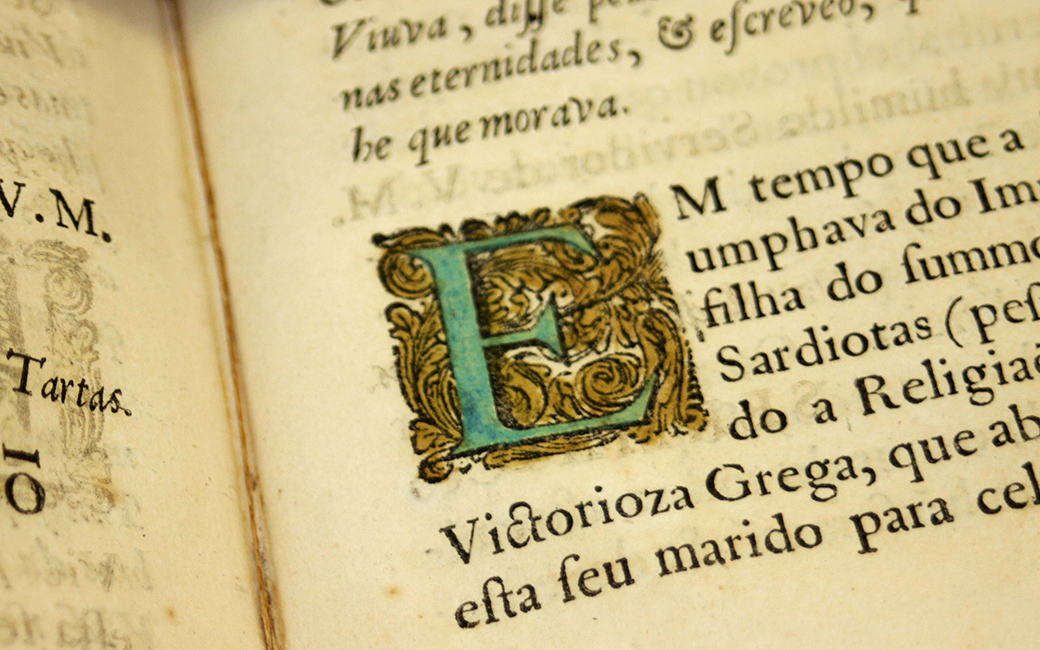
Labor of Love
Preserving Cook Libary’s Judaic Collections
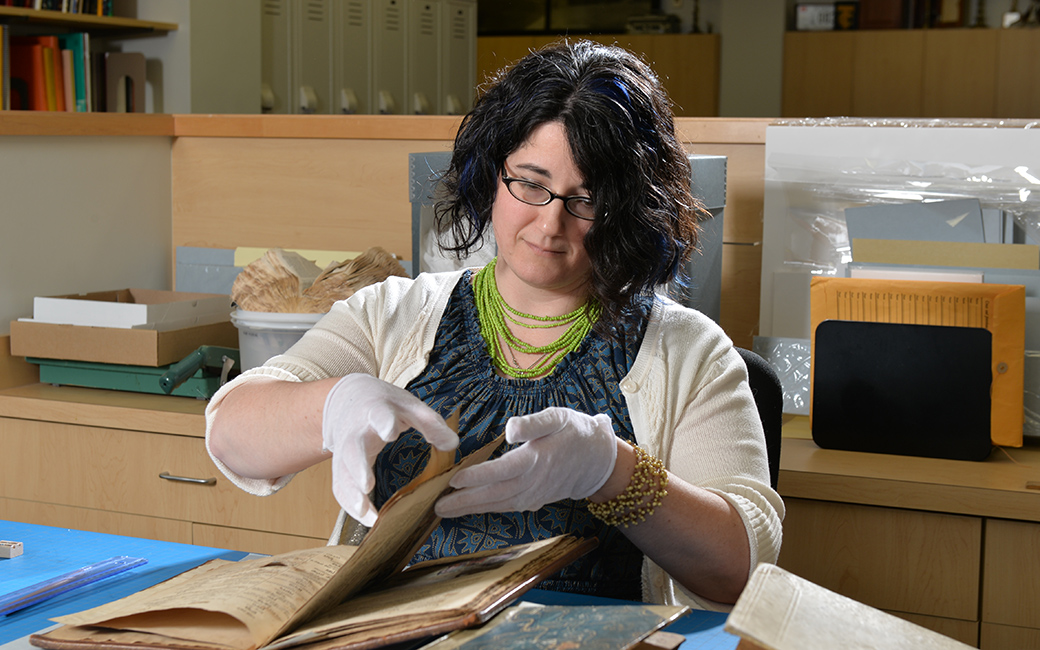
Among the piles of seemingly mundane books on nondescript metal shelves in a tucked away room in the Albert S. Cook Library sits one amazingly small volume. It holds pages of meticulous handwriting, accented by beautiful embellishments.
It is the personal prayer book of a 15th century Jewish man.
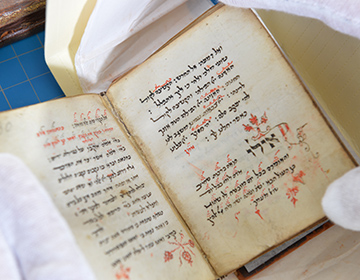
Far from ordinary, these stacks hold centuries of history rescued from ruin. In Hebrew, German, Russian and more, the Cook Library collection encompasses 70,000 volumes, thousands of which are rare or distinctive. And it’s not only books; there are also artifacts, artworks, music and other items. All told, it is the largest trove of Jewish cultural and religious history in the southeastern United States.
“Thinking about where these pieces have been,” says Towson University Dean of Libraries Deborah Nolan, “how they affected the people who wrote them, made them, read them, taught from them—the human side of what these pieces did and continue to do is what touches me.”
Stacks of books bear the stamp of the Jewish Cultural Reconstruction on their inside covers. The JCR was formed in 1947 to return to rightful heirs cultural property that had once belonged to Holocaust victims, or to those whose survival required flight.
Some of those survivors recorded videotaped testimonials. Those are housed in the collection too.
“In a few years, all the Holocaust survivors are going to be gone,” says Jill Max, executive director of the Baltimore Hebrew Institute (BHI). “So the value of that collection, and the idea that it isn’t digitized, is upsetting to me.”
Digitization is just one of many preservation efforts important to BHI and the library. It requires skill, painstaking attention, an understanding of historical printing materials, and technical tools. Restoring just one book can cost more than $10,000. Video-to-digital-file conversion requires specialized equipment.
According to catalog librarian Elaine Mael, the collection came to Cook in 2009 when the Baltimore Hebrew University (BHU) integrated with Towson University, bringing new Jewish Studies programs and establishing the Baltimore Hebrew Institute on campus. The BHU library had long served the Jewish community as an educational tool and a connection to its rich history. Towson University maintains that connection to history and makes the collection accessible to a larger audience.
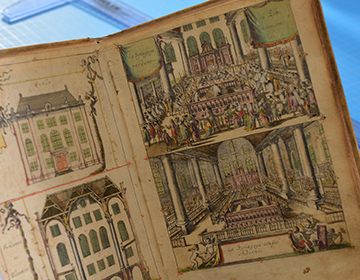
Students in Towson’s Jewish studies programs use the materials for research; however, the collection isn’t just for people of Jewish faith or those seeking degrees.
“Students outside the field will also find the collection of value,” says Professor Susanna Garfein. “[It] covers history, philosophy, religious studies, biblical studies, political science, sociology, anthropology, literature and foreign language.”
Preserving the centuries-old texts is a labor of love for Nadia Nasr, the university archivist and special collections librarian. Her favorite is a book detailing the dedication of a Portuguese synagogue in Amsterdam in 1675. She’s enthralled with the hand-tipped illustrations and the loose, handwritten pages documenting the costs and materials used to build the synagogue.
“It’s a beautiful example of the book as an art form,” Nasr says. “It’s bound in vellum with a few tooled embellishments, but it opens to reveal beautifully hand-colored diagrams of various aspects of the synagogue.”
Everything in the collection is a form of art, but there’s another, less tangible treasure here: that of connection.
For years, Jewish elders have worried that young generations would not cherish their history. This year’s new group of students in Jewish Studies and Leadership in Jewish Education and Communal Service give Jill Max some hope. So do the calls she gets every week from people who want to donate materials.
“People know that this is a place where we value those kinds of things,” she says.
In a way, Nasr’s favorite book, about the Portuguese synagogue, represents the entire collection. “It’s very simply bound on the outside. It would be easy to overlook,” Nasr says. “But it’s just got so much beauty on the inside.”
Support Cook Library's Special Collections and Archives
The special collections and archives department at Cook Library works to preserve and maintain hundreds of volumes and other items, including some of those mentioned in this story. Your contributions will help us preserve the collection. Give now.
Visit the Collection
Second floor: circulating collection and exhibits of rare items
Third floor: reference collection
Fifth floor: rare books and special collection items
Cook Library Hours
Attend a “White Gloves Tour”
